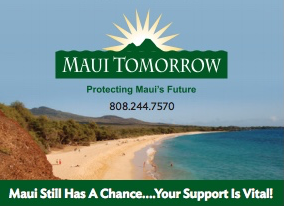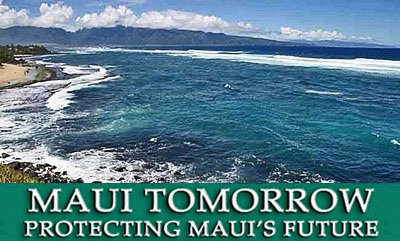By Gary Hooser
Judging from a variety of not so very subtle signals coming out of the legislature, the 2012 legislative session will feature a full frontal assault on environmental protections.
Framed under the banner of eliminating “regulatory barriers” in order to stimulate economic development and create jobs, numerous bills to dismantle important environmental protections are forthcoming and will be pushed hard.
Lawmakers will be in an untenable position. Hearing rooms will be packed with construction workers wearing bright orange t-shirts emblazoned with the words “Jobs Now” and countered with like numbers of environmental supporters sporting equally bright green “Keep the Country, Country” t-shirts.
Behind the scenes, in the hallways, and in private meetings, large landowners and developers (who will not be wearing t-shirts) will push their agenda to increase profits by removing “regulatory barriers” and “red tape” – code words for environmental and public interest protections. But as we’ve seen throughout the country, while increased environmental degradation and increased profits are guaranteed, increased employment certainly is not.
Red tape is a red herring. Without question, the vast majority of projects that fall under Hawaii’s environmental review law, Chapters 341 and 343, Hawaii Revised Statutes (HRS) go forward without delay or legal challenge. Yes, when someone attempts to circumvent the law or avoid doing what is obvious, pono, and in the public interest, the project may end up in court or even on the front page of the Wall Street Journal.
My experience as the Director of the Office of Environmental Quality Control is that most do not really understand the law.
Chapter §341-1 states: “The legislature finds that the quality of the environment is as important to the welfare of the people of Hawaii as is the economy of the State.”
Chapter 343 simply requires reviewing certain proposed actions involving the public interest in order to disclose potential environmental impacts. These projects involve public funds, public lands, or sensitive/special areas. In other words, the law protects the public interest by ensuring wise use of our precious natural resources. Private projects on private lands that do not involve the public interest are not affected.
Critics of Chapter 343 will often speak of the very small “manini” projects that have no environmental impact whatsoever and yet are forced to go through an onerous, time-consuming and expensive environmental review process. This is flat out just not true.
Any project expected to have no or negligible environmental impacts can be exempted from the process in a simple, fast, and straightforward manner. This can be completed in one day and on a single sheet of paper. In fact, the vast majority of projects in Hawaii are exempted in just this way.
If the impacts are more than negligible but not likely to be significant, then an EA is needed. Significance can mean irrevocably committing a natural resource, curtailing the range of beneficial uses of the environment, or adversely affecting the economic welfare, social welfare, or cultural practices of the community and State. If impacts are expected to be significant, a full environmental impact statement (EIS) is required. Less than a dozen or so projects a year, at most, go on to a full EIS.
But for EAs and EISs, the law only requires the disclosure of impacts, suggested mitigations, and alternatives. It does not approve or deny a project, does not grant any permits, and does not require any permit conditions. It is an informational document that “discloses the environmental effects of a proposed action…on the economic welfare, social welfare, and cultural practices of the community and State…”
Our goal, our mission and our actions should be focused on the creation of good jobs and a strong economy that sustains, protects and honors our social, cultural, and environmental welfare. Anything less sells short the future of our children.
Gary Hooser – http://www.garyhooser.com


